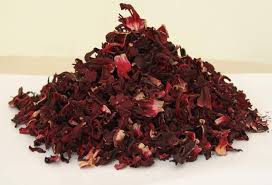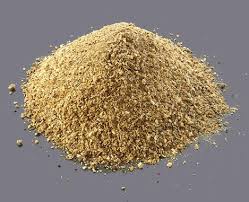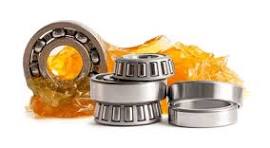Spray Dried Powder Hibiscus Flower (food grade) Production in Nigeria; The Feasibility Report.

Hibiscus (or bissap, as it is called in Senegal) is a valuable and versatile crop whose brightly coloured, star-shaped flowers are prized for their tart flavor, and can be made into a long list of by-products. Hibiscus jellies, jams, fruit pastes, traditional medicines, teas, syrups and refreshing drinks can be found in almost every market stall in West Africa. These beautiful flowers have a high concentration of vitamin C and have been proven to medically reduce high blood pressure.
Hibiscus (or bissap, as it is called in Senegal) is a valuable and versatile crop whose brightly coloured, star-shaped flowers are prized for their tart flavor, and can be made into a long list of by-products. Hibiscus jellies, jams, fruit pastes, traditional medicines, teas, syrups and refreshing drinks can be found in almost every market stall in West Africa. These beautiful flowers have a high concentration of vitamin C and have been proven to medically reduce high blood pressure.
Hibiscus flowers are multi colored and varied. About 200 species of hibiscus are known to exist, and each species has its own unique kind of flower. Hibiscus flowers are alternate, ovate to lanceolate leafs, often with a toothed or lobed margin.
The flowers are large, conspicuous, trumpet-shaped, with five or more petals, color from white to pink, red, orange, purple or yellow, and from 4–18 cm broad. Flower color in certain species, such as H. mutabilis and H. tiliaceus, changes with age. The fruit is a dry five-lobed capsule, containing several seeds in each lobe, which are released when the capsule dehisces (splits open) at maturity. It is of red and white colours.
In Nigeria, Hibiscus flower grows nearly throughout the year, though its peak production is during the dry season of November to April of the following year.
Dried hibiscus flower are used in the production f hibiscus tea. Hibiscus tea is a caffeine free herbal tea from a special type of hibiscus, called Roselle, the scientific name is Hibiscus sabdarrifa. Specifically, the tea is made out of the dried fruit part of Roselle, called calyx. It is in red color and tastes like berries.
Hibiscus is perhaps most commonly known for its use as a decorative flower, with its characteristic dark red petals and mild fragrance. In addition, the tropical plant is celebrated for its medicinal properties, and has recently seen an increase in demand worldwide. A potent extract derived from the flower can be used to make a tart tasting tea, which has good antioxidant properties, and may play a role maintaining good health.
This report seeks to examine the financial viability or otherwise of establishing hibiscus flower processing plant in Nigeria which involves the sourcing of low grade hibiscus flower and processed into spray dried powder food grade hibiscus flower (impurity 99% up).
The production capacity of the proposed business is 1.2 tons per day of three (3) shifts of eight (8) hours each working at eighty percent (80%) of the installed capacity producing twenty four (24) tons of spray dried powder food grade hibiscus flower (impurity 99% up).
Table of Contents
EXECUTIVE SUMMARY 1.0 Business Overview 1.1 Description of the Business 1.2 Vision and Mission Statement 1.3 Business Objective 1.4 Value Proposition 1.5 Critical Success Factor of the Business 1.6 Current Status of Business 1.7 Description of the Business Industry 1.8 Contribution to Local and National Economy 2. Marketing Plan 2.1 Description of product 2.2 Product Packaging and delivery 2.3 The Opportunity 2.4 Pricing Strategy 2.5 Target Market 2.6 Distribution and Delivery Strategy 2.7 Promotional Strategy 2.8 Competition 3. Production Plan 3.1 Description of the Location 3.2 Raw Materials 3.3 Production Equipment 3.4 Production Process 3.5 Production Cost 3.6 Stock Control Process 3.7 Pre-Operating activities and expenses 3.7.1 Operating Activities and Expenses 3.8 Project Implementation Schedule 4.0 Organizational and Management Plan 4.1 Ownership of the business 4.2 Profile of the promoters 4.3 Key Management Staff 4.3.2 Management Support Units 4.4 Details of salary schedule 5. Financial Plan 5.1 Financial Assumption 5.2 Start- up Capital Estimation 5.3 Source of Capital 5.4 Security of Loan 5.5 Loan Repayment Plan 5.6 Profit and Loss Account 5.7 Cash Flow Analysis 5.8 Viability Analysis 6.0 Business Risks and SWOT Analysis 6.1 Business Risks 6.2 SWOT Analysis
Project Specification:
Additional Info
Get this Report
Direct bank transfer
To order the report, Please do pay the sum of ₦200,000 into
Account Name : Foraminifera Market Research Ltd
Account Number : 274 20 569 37
Account Name : Foraminifera Market Research Ltd
Account Number : 101 76 603 95
Account Name : Foraminifera Ventures
Account Number : 011 66 066 32
Make your payment directly into our bank account. Please use your Order ID as the payment reference. Your order will not be shipped until the funds have cleared in our account.
Instructions
After payment call us on 01 -29 52 413 / 08033782777 or email us at foraminiferamarketresearch@yahoo.com with the payment details. After payment confirmation, the soft copy of the report would be sent to you within 24 hours.



